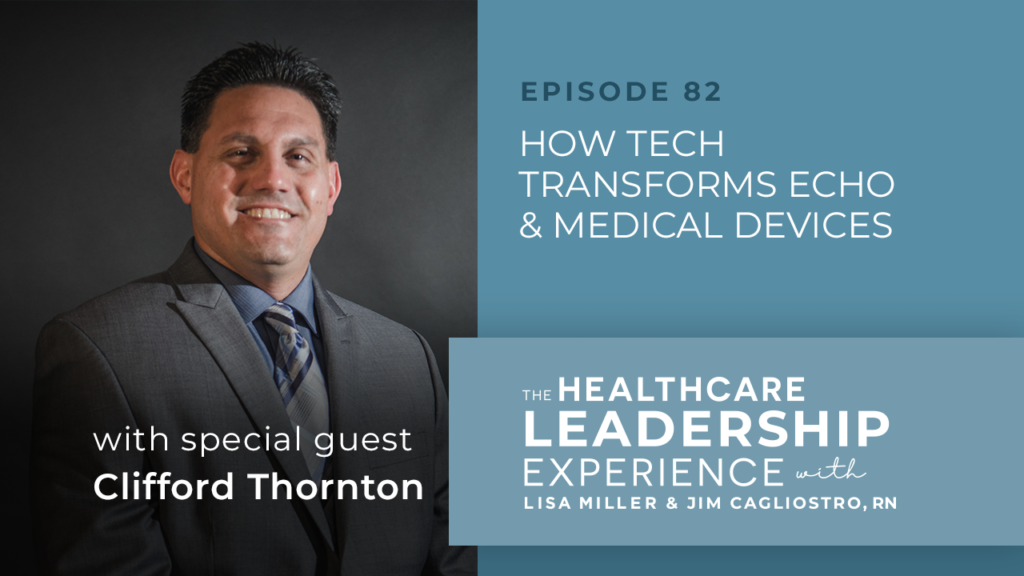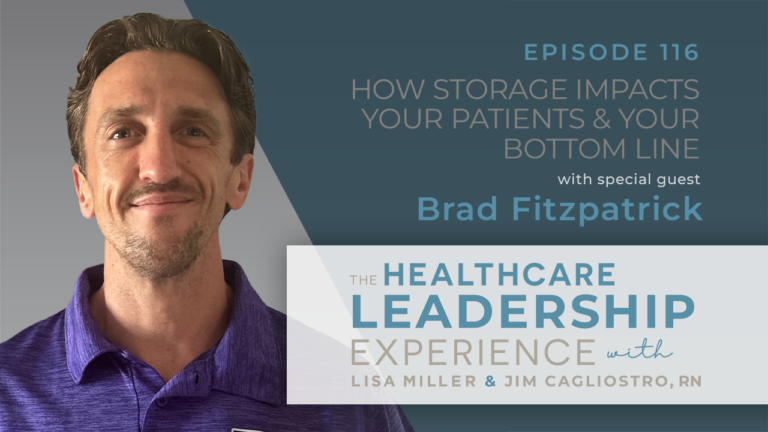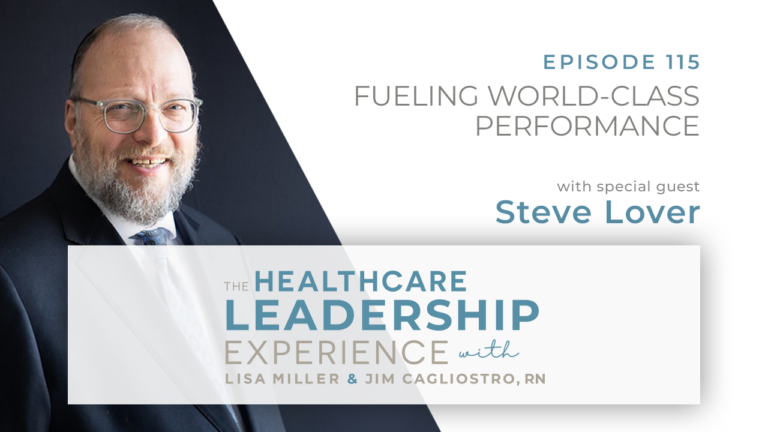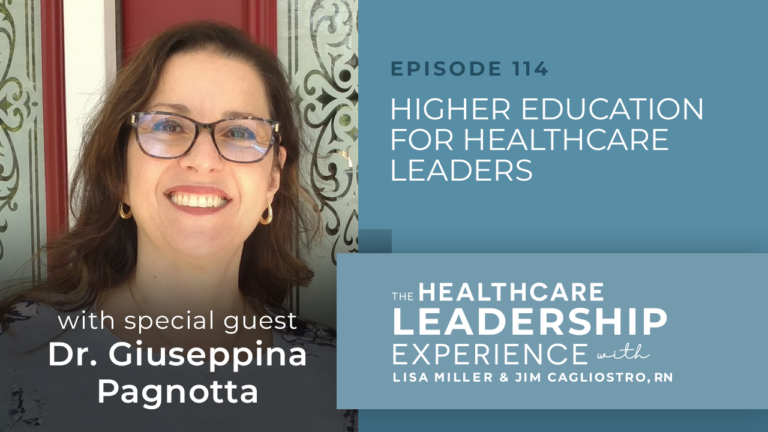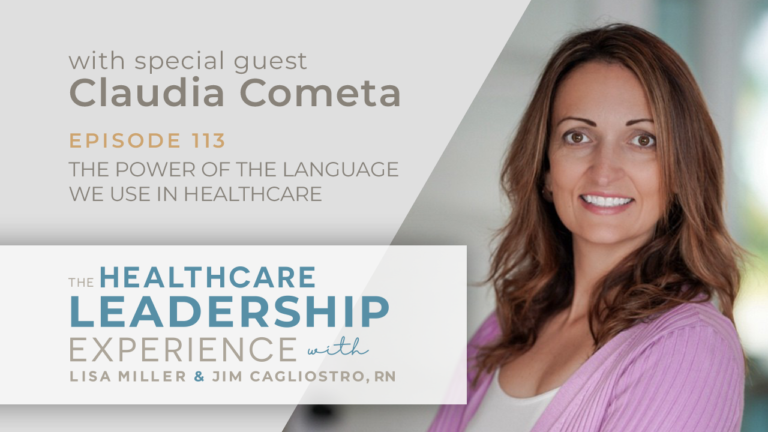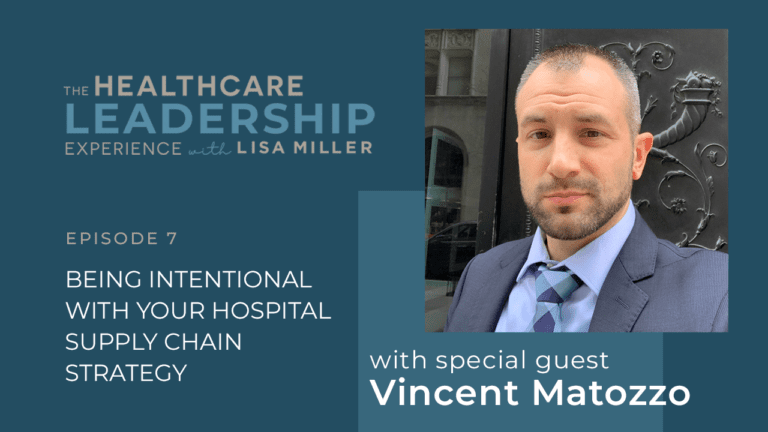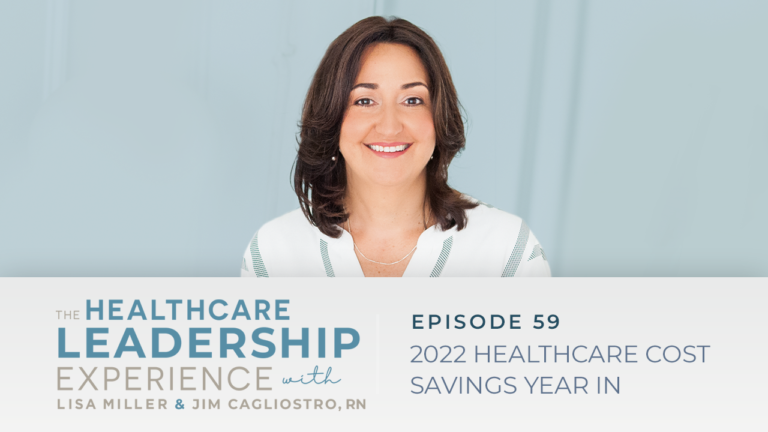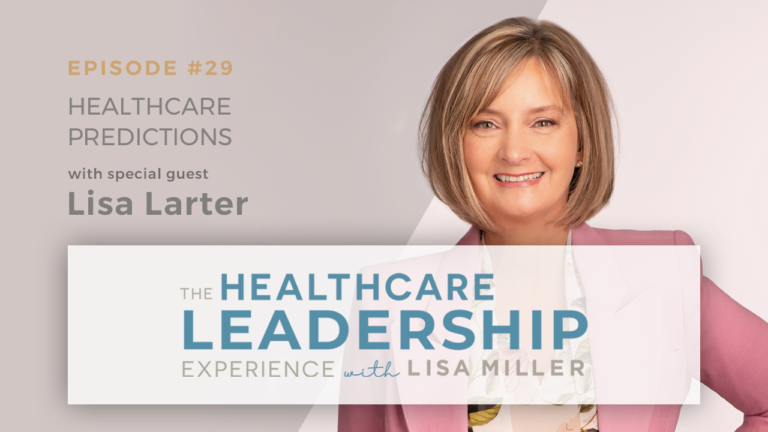Episode Introduction
Clifford explains the two types of echocardiograms, the benefits of 3D versus 2D echoes, and why it takes $72 million and a decade to launch new medical devices in the US. He also highlights how spending on cardiovascular care has risen to $600 bn a year and offers a Top Gun analogy to emphasize why healthcare leaders must carry out competitive and environmental scans.
Show Topics
- Two different types of echocardiogram
- Advances in technology have transformed echocardiography
- 3D echo versus 2D echo
- A $72 million barrier to new technology
- Choosing the right medical device for your patients
- Staying ahead in your market (learning from Xerox)
05:50 Two different types of echocardiogram (echo)
Clifford said there are two main types of echo, surface and invasive.
‘’So to really answer your question, echo is basically an ultrasound or sonogram of the heart, which is why we also refer to it as a cardiac sonogram. So those who perform this test are called an echocardiographer technician or a cardiac sonographer. There is a movement to change it to an echo specialist. Some people are not so thrilled with the technician annotation. I don’t have a problem with it, but there’s some discussion around that just for everyone’s awareness. Of course. So echoes, they can be broken down into two main types and they basically use a different type of probe. One is on the surface and one is invasive. I say invasive, but through the esophagus. I guess it is invasive. The more common and more easily performed surface echo, or you can call it a vanilla echo, is the transthoracic echocardiogram, which we also call a TTE as an acronym….So that’s the one type and the other, and this is a little more complex, this requires a healthcare team, a clinical team. So it requires the performing cardiologist, whereas the surface echo and echo tech can do it alone, just the tech and the patient.‘’
10:34 Advances in technology have transformed echocardiography
Clifford said both patients and healthcare employees benefit from the impact of technology.
‘’Look where we’ve gone from our Texas instrument scientific calculators to smart watches. And I remember always running with the Sony Walkman, the Sony cassette Walkman and the Discman, and now we have iPods. So echo is no different. It’s amazing, right? To answer that, echocardiography and its related technology because as we know, it relies a great deal on technology. So meaning the design and engineering of the cardiovascular ultrasound systems, it has actually evolved immensely since the beginning, and that was about 40 years ago. You see as techs, we joke around about those early machines that were beef, like little tanks to push around. And just like other techs, they’ve gotten more and more compact and lighter. And that of course makes techs’ lives much easier and more ergonomically friendly. I’m sure you know from a nurse’s standpoint, how important that is. Actually, the number one occupational injury for nurses is moving patients in the country, ergonomics. So we as techs love these new machines, me included. So for example, one thing I love about what’s called the Philips iE33 system, it’s one of their more modern systems is that the monitor actually pivots for angles in different directions to so many physicians. It’s really neat. So since I’m actually an oddball, lefty scanner, most echo scanners are righty, for me that’s super helpful. Most ready techs, they’re facing away from the patient, but the positive for lefties is I’m facing the patient. They can actually look at the screen. So this type of flexibility with the machines, it’s a godsend, especially for bedside echoes where we go and do the echo in the unit.’’
13:17 3D echo versus 2D echo
Clifford said 3D echoes give a more real perspective of the heart, enhancing interventional procedures and patient care.
‘’Really though, the most meaningful advance for echo, what really has changed, it has been the growing availability use of 3D echo versus the standard 2D. So there’s been a growing availability of 3D echo over the last decade or so. And today I would say there’s about 75% of availability of 3D echo….about 35% of all US labs probably use it routinely. So you can see it’s become pretty standard. The clinical benefit, it may not be readily apparent sometimes, but I thought it was pretty neat. I definitely found it to be a more real perspective of the heart. But there really is a benefit to the 3D TEE, and it actually plays a pivotal role in the growing prevalence of interventional procedures. Especially things like transcatheter valve replacement. Some other important advantages of the 3D echo include it eliminates geometric assumptions, quantifying complex geometric shape volumes, the ability to view structures from any perspective, and also assessing a lesion in what we call simultaneous multiplane. So with 2D echo, as tech cardiologists, we have to kind of imagine things, but the 3D gives it more of this real visualization.’’
17:17 A $72 million barrier to new technology
Clifford said it takes a decade and $72 million to launch a new medical device in the US.
‘’On average, it costs about $72 million to start a new medical device in the United States. You need a good amount of money. It’s a dynamic, but very challenging intersect between the medical science and business. But I would say the main challenge with all this is it takes around a decade, and I know you’re very familiar with this, it takes around a decade or more to develop and refine and test these medications and new medical devices. What could happen in the span, the market evolves and you see new entrants, the economy changes. So this timing aspect, Jim, it’s really difficult, extremely difficult. Also, unfortunately, we’ve seen a lot of biotech, venture capital firms actually exit the United States or pull back significantly. I think the risk is scaring a lot of people. Very risky. For those launching something in this space, some advice. I would say, you really want to make sure it is quite novel and really have a compelling case and the proof of concept, that’s your bread and butter. That’s a critical early milestone.’’
20:39 Choosing the right medical device for your patients
Clifford explained the key elements hospital leaders should consider in choosing the right medical device.
‘’Yeah. That’s another very important question. It’s become difficult to sort through it. You’re right there. So my underlying philosophy that I learned from experience and also by studying a lot of successful leaders is that you want to always aim for high quality and strong results. Okay? You want to have your binoculars pointed in the right direction and everything should fall behind that. With that being said, I think the key for hospital leaders is, one, they want to look at how the technology, how it fits into their existing suite of services and how it aligns and how it can bolster their existing services. Two, they must consider if they have the infrastructure, the staff and the resources to support a certain program, say like what we talked about, their percutaneous valve replacement. If they don’t have the tools, it doesn’t mean never, it means now they need to start building and selling a business plan to amass that capability on all levels, which means the tech, the staff, and related expertise and the infrastructure. Build a business case for that. There are then… Of course, we talked about before with the medical device tiers, the regulations. You got to take that into account.’’
28:59 Staying ahead in your market (learning from Xerox)
Clifford said competitive and environmental ‘’scans’’ are vital with rapid advances in technology.
‘’And finally, I think this is really key. We talked about this, the piece of change. We talked about the windows of opportunity and so forth, and what we need to do or leaders need to do, and I mean they need to do this constantly and also rigorously, is to do what we call from marketing people, we talk environmental or competitive scans. And the reason for this is you never know what technology or competitor can come out of a field or to identify new opportunities. A lot of people know Xerox was invented some of the early internet technologies, but they just didn’t capitalize on it. They maybe didn’t look at the competition out there. And now we have Google and there was Netscape and then Google, and the leaders out there. Now Google almost dominates online advertising. So you want to be aware of what’s out there…. on average today, companies have only about a three-year window to make a profit on a given product or service.’’
Show Links
Connect with Lisa Miller on LinkedIn
Connect with Jim Cagliostro on LinkedIn
Connect with Clifford Thornton on LinkedIn
Check out VIE Healthcare and SpendMend
You’ll also hear:
Inspiration from his uncle, and a passion for fitness; Clifford’s journey into cardiology.
Putting the power of a human heart into context: ‘’They say in a lifetime an average heart pumps enough volume of blood to fill more than three super tankers. So just to give you a picture that equates to around 1 million barrels of blood.’’
Why a good pair of shoes is critical working in cardiac care: ‘’….for one of my first or early echo jobs in Naples, Florida, the job description listed the ability to walk, I kid you not. seven miles per day as a requirement for the job.’’
Keeping the focus on people: ‘Just an example, in New York state, they just made a certain nurse to patient ratios mandatory, meaning it’s a state law in their intensive care unit. So they have to adhere to these nurse to patient ratios in all New York ICUs now. So managers, they need to work around all these kinds of things and take it into account.’’
The cost of treating cardiovascular disease: ‘’…shortly after Medicare was instituted, cardiovascular spending in the United States jumped to around 100 billion a year within 10 years. Today that figure how much we spend on cardiovascular to treat cardiovascular disease in the US is 600 billion a year. And globally, I would say it’s around 1 trillion.’’
What To Do Next:
- Subscribe to The Economics of Healthcare and receive a special report on 15 Effective Cost Savings Strategies.
- There are three ways to work with VIE Healthcare:
- Benchmark a vendor contract – either an existing contract or a new agreement.
- We can support your team with their cost savings initiatives to add resources and expertise. We set a bold cost savings goal and work together to achieve it.
- VIE can perform a cost savings opportunity assessment. We dig deep into all of your spend and uncover unique areas of cost savings.
- If you are interested in learning more, the quickest way to get your questions answered is to speak with Lisa Miller at lmiller@spendmend.com or directly at 732-319-5700
Episode Transcript
DOWNLOAD THE FULL PDF TRANSCRIPT HERE
CLICK HERE TO OPEN THE FULL TRANSCRIPT
Cliff (00:00):
I think the key for hospital leaders is, one, they want to look at technology, how it fits into their existing suite of services and how it aligns and how it can bolster their services. Two, they must consider if they have the infrastructure, the staff, and the resources to support a certain program. If they don’t have the tools, it doesn’t mean never. It means now they need to start building and selling a business plan to amass that capability on all levels, which means the tech, the staff, and related expertise and the infrastructure.
Introduction (00:30):
Welcome to the Healthcare Leadership Experience Podcast, hosted by Lisa Miller and Jim Cagliostro.
Lisa is the founder of VIE Healthcare Consulting and now Managing Director at SpendMend.
Lisa and her team has generated over $1 billion in financial improvements for VIE’s clients since 1999.
Since 2007, Jim has been a registered nurse working in critical care, perioperative services and outpatient settings at nationally recognized medical facilities across three states.
You’ll hear conversations on relevant and trending topics in healthcare and much more. Now, here’s your hosts, Lisa and Jim.
Jim (01:14):
Hi. This is Jim Cagliostro and you’re listening to The Healthcare Leadership Experience. Today’s guest is Clifford Thornton. He is a marketing consultant in the med tech space with a background in cardiovascular health.
Today, we’re going to explore a bit about cardiovascular health, cardiovascular disease, some heart failure, some coronary artery disease, and basically some traditional treatments and some up and coming interventions. So I’m personally excited about it. My history is in cardiac health when I began nursing, so I’m excited for Cliff to refresh my memory and also to tell us about some of the new and exciting things that are coming. So Cliff, thank you so much for joining us today and welcome.
Cliff (01:51):
Jim, first, I would like to thank you for inviting me to your podcast.
Jim (01:55):
Absolutely.
Cliff (01:56):
I greatly appreciate it and I really appreciate the meaningful work that you do to elevate the quality of healthcare. That really means something.
Jim (02:04):
Thank you, Cliff.
Cliff (02:06):
So if I can sum up my healthcare experience with one word, it would be diverse. I’ve been exposed to regional hospitals, community clinics, private practices, and even mobile ultrasound firms. And if I can say one thing, it’s that I observe endless ways that healthcare delivery and operations can be improved. And I’m sure you know what I’m talking about.
Jim (02:28):
Yeah.
Cliff (02:29):
This is why I think what you do is very important and also timely. There’s been a lot of discussion around quality of healthcare and things like that as of late. So whether it be electronic medical records, appropriate use rules for diagnostic testing, that means to reduce the amount of repeat testing, infection prevention, which I’m sure you appreciate with your background and patient communication and all those things.
Cliff (02:56):
There’s ample room for improvement in all these areas, and I’m sure you would agree. So Jim, how I got into healthcare, it’s a bit of a story and I’m sure you have a lot of stories as well. So let me just tell this story real quick. In a previous career, I worked in the telecommunication sector in analysts and program management roles. Around 2001, post 9/11 and all that, the industry experienced a major downturn and that impacted me.
Cliff (03:26):
So at that time, I decided to change careers or change gears. I’d always had this interest in healthcare for a couple reasons. One, my late uncle who was based in South Florida, the Miami area, he actually ran a nephrology practice or for those you’re not familiar with nephrology, a kidney doctor, for decades. When I was younger and even in college, I would visit his dialysis clinics and go on rounds with him and see these really ill patients. If you’re not familiar, which I’m sure you are, dialysis patients tend to be pretty ill and also with a lot of comorbidities and heart failure.
Cliff (04:03):
So I used to go on rounds with him when I was younger and on visits down there. And unfortunately, we lost him. It was on Christmas day in the early 2000s. Tough time for a family, but a lot of great memories with him. But in his obituaries, they called him the old school doctor. He always made himself available to his patients, no matter what time of day. He was just super dedicated. He made his home garage into his office.
Jim (04:30):
I love it.
Cliff (04:33):
Maybe I took something from that. Also, another reason why I jumped into the cardiovascular tech area, I was always a lifelong runner, mostly middle distance, 800 meters track and also fitness weight training and you name it, swimming, all that. So the function of the heart and how it’s so powerful and how it powers us for so long a lifetime, that’s fascinating to me. So it gravitated toward that. They say in a lifetime an average heart pumps enough volume of blood to fill more than three super tankers. So just to give you a picture that equates to around 1 million barrels of blood.
Jim (05:15):
So you’ve spent many years caring for patients. Specifically when we think about echoes, you mentioned people with heart failure and other cardiac conditions. Can you explain to our listeners maybe some who have limited experience with heart health and cardiovascular disease, can you explain what an echo is and how it’s used to help diagnose a range of heart conditions?
Cliff (05:35):
Definitely. Jim, that’s a great question and I’m actually an advocate for creating more awareness around echocardiograms and the other cardiac diagnostic tests, which include E12 lead EKGs, halls and monitors, treadmill stress tests, and the list goes on.
Jim (05:50):
Sure.
Cliff (05:50):
So to really answer your question, echo is basically an ultrasound or sonogram of the heart, which is why we also refer to it as a cardiac sonogram. So those who perform this test are called an echocardiographer technician or a cardiac sonographer. There is a movement to change it to an echo specialist. Some people are not so thrilled with the technician annotation. I don’t have a problem with it, but there’s some discussion around that just for everyone’s awareness.
Jim (06:20):
Yes. And any change people get concerned about, yes. But I’m glad you mentioned that.
Cliff (06:24):
Of course. So echoes, they can be broken down into two main types and they basically use a different type of probe. One is on the surface, and one is invasive. I say invasive, but through the esophagus. I guess it is invasive.
Jim (06:40):
Yeah, absolutely.
Cliff (06:42):
The more common and more easily performed surface echo, or you can call it a vanilla echo, is the transthoracic echocardiogram, which we also call a TTE as an acronym. That’s tango, tango, echo in the military and phonetically the E just happens to stand for echo, so that’s an easier one for me to remember.
Jim (07:05):
Yes.
Cliff (07:06):
So that’s the one type and the other, and this is a little more complex, this requires a healthcare team, a clinical team. So it requires the performing cardiologist, whereas the surface echo and echo tech can do it alone, just the tech and the patient. The T requires the cardiologist is actually manipulating the probe. Sometimes, like for my case, once they got pretty proficient with T’s, I would actually… The cardiologist would have me extend the probe using the controls on the base. So sometimes you’ll be involved, but there is a lot some controversy around that and some white papers written whether a tech should be able to perform a TEE alone without…cardiologist. But I think the consensus was there’s too much risk, and I would agree with that because a lot of things… I’ve seen things go bad with airway obstructions, and one time the pulse-ox went down to 20% and they had to pull up the bag mask.
Cliff (08:04):
So it’s no funny business, not an easy business. So what I want to get across was this team for the TEE, the transesophageal echo that requires the cardiologist and anesthetist, and they usually use something called propofol for the conscious sedations. The reason for conscious sedation is oftentimes we need the patient to perform the Valsalva maneuver from the bubble study, and then you have the cardiac nurses. So it’s a whole repertoire there for that test.
Cliff (08:35):
And you might ask, well, why the esophagus? Well, the esophagus happens to be very proximal to the heart, therefore we can get very high quality and detailed images of the heart and the structures, and we can get really good, clear images from this position.
Jim (08:50):
When we’re talking about the echo, just for people to understand, why is that so important today? I mean, do you see it as a greater need, especially in terms of diagnosing and eventually treating? I mean, why would you say it is important for people to understand, yeah, the echo is used often in healthcare and it can really make a difference for patients?
Cliff (09:10):
Yeah. The main thing is, although the functional heart disease, it uncovers leaky valves, cardiomyopathies and all these kinds of things. I am going to get a little bit more into that, in regards to that. But the main thing is I tell people the EKG will only tell so much. For example, with hypertrophic cardiomyopathy where the left ventricular walls get thickened and therefore the chamber size decreases, the EKG will show higher amplitude or voltage on the EKG, the QRS, but that’s not the end all.
Cliff (09:46):
Ideally, you want to see a picture of what’s going on and take all the doppler measurements. So that’s really… Especially for LVOT, left ventricular outflow tract obstruction, you want to measure those pressure gradients and see how elevated they are and we’ll even have the patient do Valsalva to increase those pressures. So that’s why there’s a lot of education for echo. There’s so many conditions and there’s a lot to unravel there when we’re doing it.
Jim (10:17):
There’s been many changes in the last two, three decades just in terms of technology even across the board. So from the echo perspective, from what you’ve seen since 2003, how has the technology changed? How has it advanced over the years and where do you see it going?
Cliff (10:34):
Yeah, absolutely right. You’re right, Jim. It’s amazing technology. Look where we’ve gone from our Texas instrument scientific calculators to smart watches. And I remember using always running with the Sony Walkman, the Sony cassette Walkman and the Discman, and now we have iPods. So echo is no different. It’s amazing, right? To answer that, echocardiography and its related technology because as we know, it relies a great deal on technology. So meaning the design and engineering of the cardiovascular ultrasound systems, it has actually evolved immensely since the beginning, and that was about 40 years ago.
Cliff (11:13):
You see as techs, we joke around about those early machines that were beef, like little tanks to push around. And just like other techs, they’ve gotten more and more compact and lighter. And that of course makes tech lives much easier and more ergonomically friendly. I’m sure you know from nurses’ standpoint, how important that is. Actually, the number one occupational injuries is for nurses moving patients in the country, ergonomics. So we as techs love these new machines, me included.
Cliff (11:45):
So for example, one thing I love about what’s called the Philips iE33 system, it’s one of their more modern systems is that the monitor actually pivots for angles in different directions to so many physicians. It’s really neat. So since I’m actually an oddball, lefty scanner, most echo scanners are righty, for me that’s super helpful. Most righty techs, they’re facing away from the patient, but the positive for lefties is I’m facing the patient. They can actually look at the screen.
Cliff (12:17):
So this type of flexibility with the machines, it’s a godsend, especially for bedside echoes where we go and do the echo in the unit. It’s too much of a headache to move around, a lot of the ICU patients. Almost all the ICU, CCU patients are done bedside. So I’m sure you know working around the so-called Christmas tree, all the bags, the balloon pumps, dialysis machines and whatever else may be there. We have to work around all this. So you have to be actually pretty nimble, physically nimble, and also have good endurance.
Cliff (12:54):
One thing you might find interesting, one job description for one of my first or early echo jobs in Naples, Florida, the job description listed the ability to walk, I kid you not seven miles per day as a requirement for the job.
Jim (13:09):
Sure. It’s a workout. It’s good that that training in the 800 probably helped, right?
Cliff (13:17):
Yes. You’re absolutely right. Also a really good pair of shoes are critical. Really though the most meaningful advance for echo, what really has changed, it has been the growing availability use of 3D echo versus the standard 2D. So there’s been a growing availability of 3D echo over the last decade or so. And today I would say there’s about 75% of availability of 3D echo. If you take all the labs and about 35% of all US labs probably use it routinely. So you can see it’s become pretty standard.
Cliff (13:54):
The clinical benefit, it may not be readily apparent sometimes, but I thought it was pretty neat. I definitely found it to be a more real perspective of the heart. But there really is a benefit to the 3D TE, and it actually plays a pivotal role in the growing prevalence of interventional procedures. Especially things like transcatheter valve replacement. Some other important advantages of the 3D echo include it eliminates geometric assumptions, quantifying complex geometric shape volumes, the ability to view structures from any perspective, and also assessing a lesion in what we call simultaneous multiplane.
Cliff (14:31):
So with 2D echo, as tech cardiologists, we have to kind of imagine things, but the 3D gives it more of this real visualization.
Jim (14:41):
Well, that 3D echo, I know when I first started nursing, I would see the 2D echo kind of the standard, but we see more and more of that 3D echo, and when you have that more detailed image, it gives better visibility. And so it helps in terms of diagnosing it. It helps in terms of more accurate diagnosis and then more accurate treatment, more effective treatment. So I think it’s great to see this advancement in technology and it can be used for better patient outcome, which is great. That’s ultimately what we’re all shooting for.
Jim (15:10)
If you’re just tuning in, you’re listening to The Healthcare Leadership Experience, and I’m your host, Jim Cagliostro.
This show is sponsored by VIE Healthcare Consulting, a SpendMend company, which provides leading edge financial and operational consulting for hospitals, healthcare institutions, and other providers of patient care
Since 1999, VIE has been a recognized leader in healthcare costs, hospital purchased services, healthcare benchmarking, supply chain management, and performance improvement.
You can learn more about VIE Healthcare Consulting at viehealthcare.com.
Jim (15:40):
So switching gears, Cliff, definitely, we talked about the technology and we see a lot of these advancements, see a lot of devices. You recently moved into… At least you’re getting your hand involved with the space of medical device. How is that… If I could call it a transition, what prompted you to make that move or to get involved in the medical device arena?
Cliff (16:02):
I would say the main thing that prompted the move is that I missed the excitement of business venture, the analytical work and the product management, which I have a real passion for the product management. For some reason in college, I was very engaged in organizational behavior and also marketing strategy and planning, really enjoy those courses. I had some really terrific professors in those areas, and some of them I still keep in touch with. Thanks to LinkedIn.
Cliff (16:35):
And these courses, it stayed with me what I learned. And the other thing was working with other business professionals like we talked about that clinical professional interaction, while also the business professionals, that meeting of minds that I really enjoy that type of interaction as well. I was speaking so-called cardiology language and with the cardiologist and nurses, but I also miss the business conversations. One time we’re talking about mitral regurgitation and then we’re talking about profit margins and all this kind of stuff. So I miss the business lingo.
Jim (17:16):
Sure. It’s a whole ‘nother language, a whole ‘nother language.
Cliff (17:17):
Yes, sir, absolutely. Regarding the transition, I wouldn’t say it was difficult, but it was a bit challenging. I had to sharpen my Excel and PowerPoint skills. And there’s also a learning curve with medical devices, given that there’s a lot of regulatory matters, which are driven by the FDA. On average, it costs about $72 million on average to start a new medical device in the United States. You need a lot of, good amount of money.
Cliff (17:49):
It’s a dynamic, but very challenging intersect between the medical science and business. But I would say the main challenge with all this is it takes around a decade, and I know you’re very familiar with this, it takes around a decade or more to develop and refine and test these medications and new medical devices. What could happen in the span, the market evolves and you see new entrants, the economy changes. So this timing aspect, Jim, it’s really difficult, extremely difficult.
Cliff (18:21):
Also, unfortunately, we’ve seen a lot of biotech, venture capital firms actually exit the United States or pull back significantly. I think the risk is scaring a lot of people. Very risky. For those launching something in this space, some advice. I would say, you really want to make sure it is quite novel and really have a compelling case. And the proof of concept, that’s your bread and butter. That’s a critical early milestone.
Cliff (18:50):
Everyone is going to ask for your proof of concept. So you really want to have patients. You want to utilize every available resource and build a very strong team on both the clinical and the business side. I would say especially the financial competence, many experts in this field say having the right team is really what’s going to make the difference. And Jim, having a Navy background, I couldn’t agree more with that, with this team concept. So imagine the team. So imagine the team. You need to run a $14 billion aircraft carrier, which is carrying a whole bunch of $30 million fighter jets. You need a pretty good team there.
Jim (19:29):
Oh, yeah. I’m telling you, Cliff, I’m glad you brought those points out. Just the whole thought. I haven’t really stopped to think much about introducing a new medical device to the healthcare landscape. You talk about the cost, then you talk about the time, a decade on average, and then developing and refining and thinking about all the regulations. And by the time that’s all done, you mentioned the market or the need for that could have changed or shifted. And so there is great risk. I’m glad you walked us through that. I think that’s a great thing for us to understand.
Jim (20:01):
It’s a huge investment to be developing a new medical device and promoting it, but that proof of concept, like you said, is a big first step. So I’ll say this. It can be tough to keep up with all these changes, all these new devices coming out. What can hospital leaders keep in mind as they’re exposed to so many advancements, especially in terms of care for the heart, but really any advancement in technology? How can hospital leaders navigate this vast sea of new devices and determines which ones will ultimately promote the best patient care? Any advice in that area? Anywhere that hospital leaders should be looking?
Cliff (20:39):
Yeah. That’s another very important question. It’s become difficult to sort through it. You’re right there. So my underlying philosophy that I learned from experience and also by studying a lot of successful leaders is that you want to always aim for high quality and strong results. Okay? You want to have your binoculars pointed in the right direction and everything should fall behind that. With that being said, I think the key for hospital leaders is, one, they want to look at how the technology, how it fits into their existing suite of services and how it aligns and how it can bolster their existing services.
Cliff (21:17):
Two, they must consider if they have the infrastructure, the staff and the resources to support a certain program, say like what we talked about, their percutaneous valve replacement. If they don’t have the tools, it doesn’t mean never, it means now they need to start building and selling a business plan to amass that capability on all levels, which means the tech, the staff, and related expertise and the infrastructure. Build a business case for that.
Jim (21:45):
Makes sense, yeah.
Cliff (21:46):
There are then… Of course, we talked about before with the medical device tiers, the regulations. You got to take that into account. So for example, some states, and I believe for most US states require that actually an open heart surgery team is always on standby during a cardiac catheterization. Something can go bad. They can puncture the artery. The patient can go into cardiac arrest. So they need to have that standby. And then the staffing requirements for certain procedures and so forth, they need to look at, do they have the people, of course? Healthcare so much is about people, as you know well.
Cliff (22:20):
Just an example, in New York state, they just made a certain nurse to patient ratios mandatory, meaning it’s a state law in their intensive care unit. So they have to adhere to these nurse-to-patient ratios in all New York ICUs now. So managers, they need to work around all these kinds of things and take it into account. So in terms of navigating the cardiovascular C, how to sort things out, there’s a lot of resources out there today. I would say the best resources are probably, we have specialized healthcare business and clinical specific consultants like myself and these specialized consultants could be healthcare executives, cardiologists, nurse practitioners, registered nurses, and cardiovascular allied health professionals like myself.
Cliff (23:08):
So there’s these individuals or consulting groups that specialize in all these kinds of things. It could be evaluating devices. It could be evaluating a percutaneous valve program. You name it. There’s so many specialists out there. So a quick story, and I learned about this and it’s actually been a source of inspiration for me. He’s called the Godfather of Cardiology consulting, and this was the late John Goodman. He authored a very important book in 1993, which happens to be the year of my high school graduation. And the title of this book was, quote, unquote, The Future of Cardiology: The Master Strategic Plan.
Cliff (23:50):
One thing I remember from it is in it, he takes us through the history of cardiac services, and he shows us how shortly after Medicare was instituted, cardiovascular spending in the United States jumped to around 100 billion a year within 10 years.
Jim (24:08):
Really?
Cliff (24:08):
Yeah. Today that figure how much we spend on cardiovascular to treat cardiovascular disease in the US is 600 billion a year. And globally, I would say it’s around 1 trillion. So Mr. Goodman’s firm, it actually has evolved into another firm, or a company called Corazon, Inc. That’s C-O-R-A-Z-O-N, Inc and they’re based in Pittsburgh, Pennsylvania. They claim to have 637 years of combined experience and 660 happy clients. Someone can see there’s definitely a demand for these cardiology consulting firms. And Corazon is just one of the many firms, but they stand out to me because they’ve actually had some interactions with their leaders.
Cliff (24:53):
So aside from these specialized consultants, some other resources, they could look at what’s called Cardiovascular Business Magazine. They’re online and print. There’s the Journal of the American College of Cardiology, also known as JACC. And then of course, the American Heart Association or the AHA and also Radcliffe Cardiology Journal is very high quality. Additionally, I talked about these, I would say the primary institutes or hospitals treating heart disease. And these include the websites of the Cleveland Clinic, the Mayo Clinic, NYU Langone and the Texas Heart Institute.
Cliff (25:31):
Just recently, actually, Cardiovascular Business published an article, the Top 25 Heart Hospitals in the US. And all these hospitals I mentioned were listed there. And then for echo, the American Society of Echocardiography or ASE and the registering body, this is the organization I got registered through is called the American Registry of Diagnostic Medical Sonographers or ARDMS. So those are just some of the key leaders in echo.
Cliff (26:00):
Also, finally, we have the websites of the major cardiac medical device manufacturers. They have a lot of great material. These are the major makers of cardiac devices, artificial valves, pacemakers. There’s coverings for shunts to close up shunts, all these kinds of things. I can go on and on about it.
Jim (26:18):
Well, Cliff, I’m glad you mentioned in terms of the resources that are available, because if a hospital leader or maybe the head of surgery at a particular health system or whoever is looking for that next device that’s going to help improve their patient care and patient outcomes, it can be overwhelming. Where do you begin? And you mentioned that the actual manufacturer’s website, great. Obviously, they’re going to put their best foot forward and show you, but consultants like yourself who are aware of what’s out there more so than someone might not be aware of everything that’s quite available or different hospitals, different journals, magazines.
Jim (26:54):
I think it’s great to have those resources available so that hospital leaders can make an educated decisions, informed decisions and gather all the information that they need. So I love that you kind of covered the range of resources that are available. So Cliff, I appreciate you can tell coming from your background, you bring a lot of valuable insight from the different fields you’ve been in, even outside of healthcare. But I would like you to share with our listeners any last words in terms of leadership lessons you’ve learned throughout your career or anything that has carried you through your career. If you want to just leave our audience with that, I’d appreciate it.
Cliff (27:31):
Absolutely, Jim. I just want to say your comment about informed decision, I couldn’t say it better myself. That’s really what it comes down to. But with regards to this last question, any final thoughts? For sure. I think this applies across, and you mentioned this, all industry sectors, is to take care of your people. You want to take care of your people. A lot of time we hear this quote, take care of your people and they will take care of you. And I think that’s true.
Cliff (27:58):
Also, I think it’s best to hire, and I really believe this, hire the right people for the job. And then once you find the right people, you want to give them some latitude versus micromanaging them. Me personally, Jim, I like to be given some structure and direction. You need some structure there. But once we do that, I like to let me run with the ball. Let me do my thing. And I’m sure a lot of professionals feel the same. We’re well-trained. You’re either a registered nurse or certified in different things or registered in echo.
Cliff (28:30):
You want to exercise. You’ve been trained. You want to have some latitude to work as a professional. I think most people would agree with that. You don’t want to constrain people. If you want to push people out the door, that’s a good way. As we all know, managing people… And I observed this a lot. Like you said, and I’ve been fortunate in that way to observe different fields and different cultures. So managing people like echo, it’s part art and it’s part management.
Cliff (28:59):
Like Echo, we say it’s part art, part science, because there’s a lot of scanning technique involved. And finally, I think this is really key. We talked about this, the piece of change. We talked about the windows of opportunity and so forth, and what we need to do or leaders need to do, and I mean they need to do this constantly and also rigorously, is to do what we call from marketing people, we talk environmental or competitive scans. And the reason for this is you never know what technology or competitor can come out of a field or to identify new opportunities.
Cliff (29:38):
A lot of people know Xerox was invented some of the early internet technologies, but they just didn’t capitalize on it. They maybe didn’t look at the competition out there. And now we have Google and there was Netscape and then Google, and the leaders out there. Now Google almost dominates online advertising. So you want to be aware of what’s out there. One of the things from, like I mentioned, I love this course, marketing strategy and planning, and one thing I learned, and I’m a big fan of is something called the SWOT. That’s S-W-O-T, SWOT analysis.
Cliff (30:11):
Those letters standing for the S, strengths, the W weaknesses, the O opportunities, and the T are the threats. So you see in the military, from my Navy background, we call that counter intelligence, also known as CI, charlie, India. And in the business world, as I’m sure you know we call it competitive intelligence, this is how Michael Bloomberg made his fortune with intelligence. And then you have Dunn & Bradstreet, all these tools that business leaders use, you need to be attuned to it.
Cliff (30:42):
It’s not cheap. It’s a worthy investment. I would say this is really important stuff. Doing these scans and knowing your competition and leaders, Jim, they just can’t afford to ignore it. It’s a must do. It’s just part of the game. And another reason for this is, and the experts say this, is that on average today, companies have only about a three-year window to make a profit on a given product or service. So the thing here is doing your homework. They can help you either maintain that window or maybe even extend it out a little bit. Another analogy from the Navy I like to use, I apologize, I’m a big Top Gun fan, is-
Jim (31:22):
Just go for it.
Cliff (31:23):
It’s like a fighter pilot. They must pay attention to their radar and look out for the bogies. Business leaders, they must also be attuned to their radars, whatever shape or form that may be.
Jim (31:36):
Cliff, I appreciate. Really, I mean, I love the clinical side of things and you sharing that with us… But even kind of the second half of our conversation recognizing that, yes, healthcare is a business and whether we like it, don’t like it, I mean, yes, there’s dangers with that. We need to recognize the reality of having people on the team who are experts in the clinical side, but also experts in the business side. And I appreciate you really touching on that double-pronged approach that we have to have as we are in the healthcare space.
Cliff (32:05):
So Cliff, thank you so much for being on the show today. And thanks to our listeners who spent time with us today.
If you have any questions about VIE Healthcare Consulting, a SpendMend company, or if you want to reach out to me or Lisa Miller, you can find us on LinkedIn. You can also find Cliff on LinkedIn as well.
We at SpendMend love helping hospitals save money and enhance the patient experience. We’re hoping that the episode today gave you some new insights and some ideas to consider and to use those ideas in your career and your own healthcare organization.
Cliff, again, thank you for your time. Thank you for being with us today.
Cliff (32:37):
You’re welcome, Jim. And if I just may say, also, you could also connect me via my website, which is cardiacguy.com.
Jim (32:45):
Thank you. Thank you so much, Cliff.
Cliff (32:47):
You’re very welcome.
Speaker (32:50):
Thanks for listening to the Healthcare Leadership Experience Podcast. We hope you’ve enjoyed this episode. If you’re interested in learning new strategies, best practices and ideas to utilize in your career and healthcare organization, check out our website at thehealthcareleadershipexperience.com. And oh yeah, don’t forget to rate and review us, and be sure to join Lisa and Jim next time on the Healthcare Leadership Experience Podcast. Thanks again for listening.
